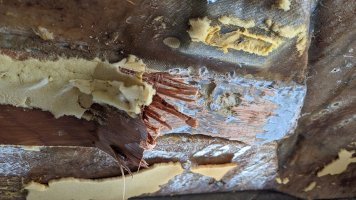
A brief pause while you retrieve your jaw from the floor or keyboard...
In the midst of a major refit of running gear, I started removing the headliner on Rumour. Abhorred by a million and one rusted staples, a series of complex folds, and a lot of mold, I started thinking there's gotta be a better way to dress up the deckhead. So, off it came. What a mess.
I'm planning on fairing, sanding, and painting the deckhead. It should be easier to spot leaks and I can finish all the through-bolted gear with nice shiny stainless cap head nuts.
Anyone have any experience doing this on an Ericson? Photos and tips to share?



